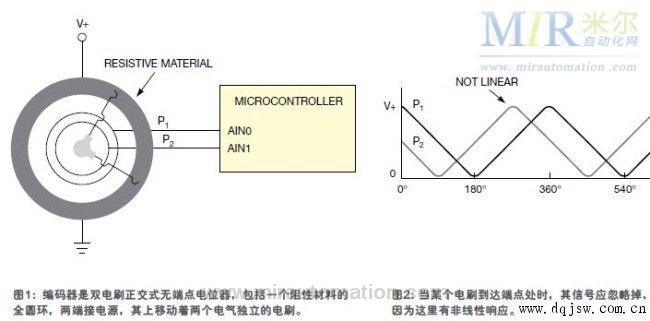Rotary encoders are often used in positioning systems with servo feedback. In this case, the cost of the
Encoder is generally not important. However, the encoder can also be used to encode the position of knobs on some user interfaces, such as the volume knob on an audio system. For these knobs, potentiometers can be selected for low-cost, high-precision, and absolute-reading values, but their travel is limited, typically to less than 340°, or optomechanical rotary encoders are available. Their travel is not limited, but the price High, low accuracy, only relative readings. This design example attempts to combine the two, with the advantages of the potentiometer, as well as the characteristics of the optical machine rotary encoder boundaryless operation.
The encoder uses the structure technology of the standard potentiometer, so it is easy to produce. It is basically a double brush orthogonal unbounded potentiometer. It has a full circular ring of resistive material that is electrically connected at both ends where two electrically independent brushes move. The two brushes are mechanically connected to each other by a 90° angle (Figure 1).

The ADC in the microcontroller reads the two signals and the firmware uses these two signals to determine the quadrant in which the axis is located. Once you know the quadrant, you can use the two brush signals to calculate the axis position. When the brush reaches the power connection, this signal should be ignored due to the non-linear response (Figure 2). There is a 90 degree angle between the two brushes, so it is not possible to be in a non-linear position at the same time. Today, even the most basic microcontrollers will have a 10-bit ADC, so the two signals have a total of 11-bit resolution, or better than 0.2°. If the application does not require an absolute reading or a software reset, the microcontroller can ignore it.
This quadrature vertexless potentiometer provides an experience similar to the old tuning knob on a classic analogue radio. It offers new possibilities for human-machine interface design, enabling consumer products to gain a noble sense at low cost.



